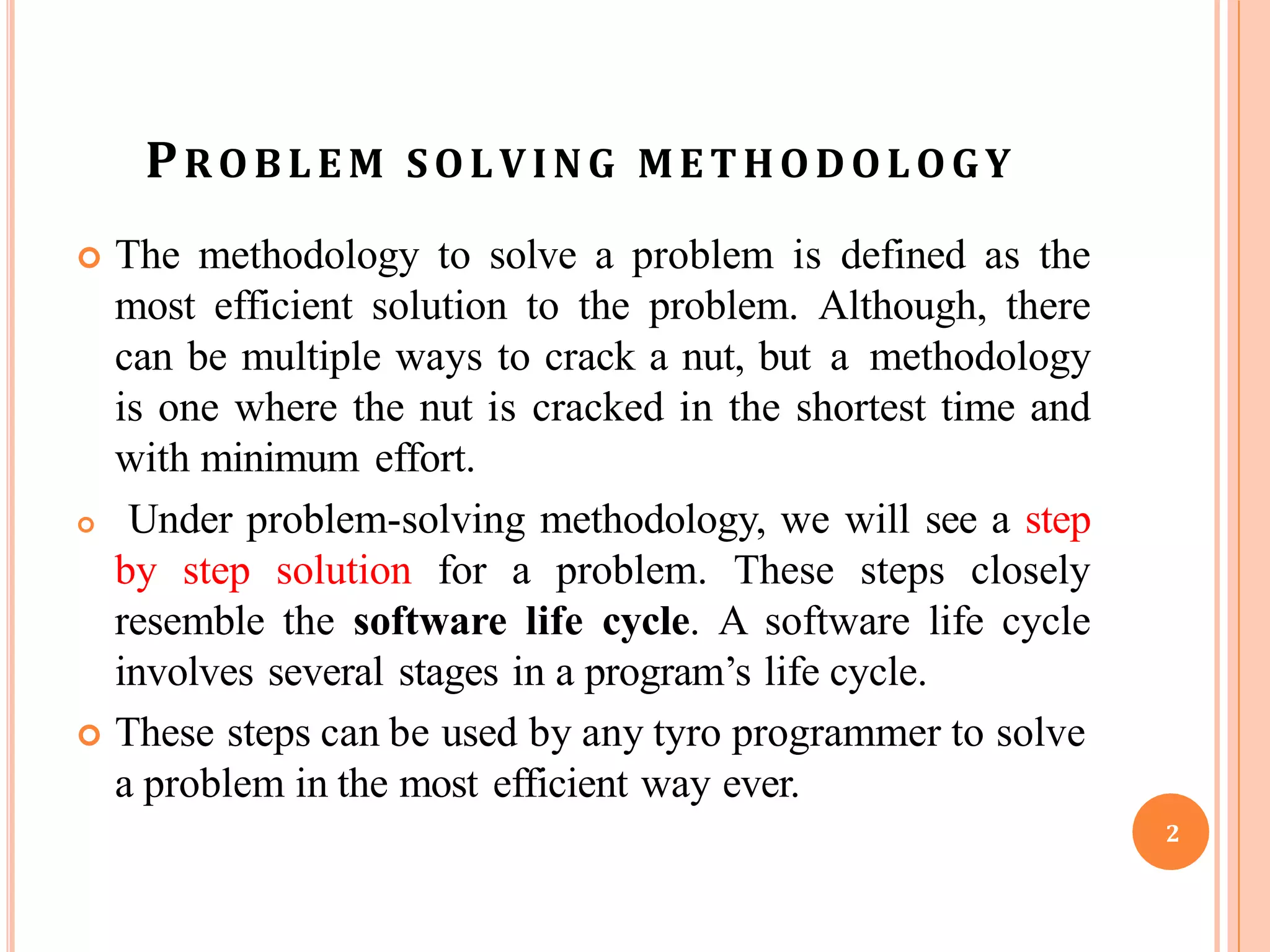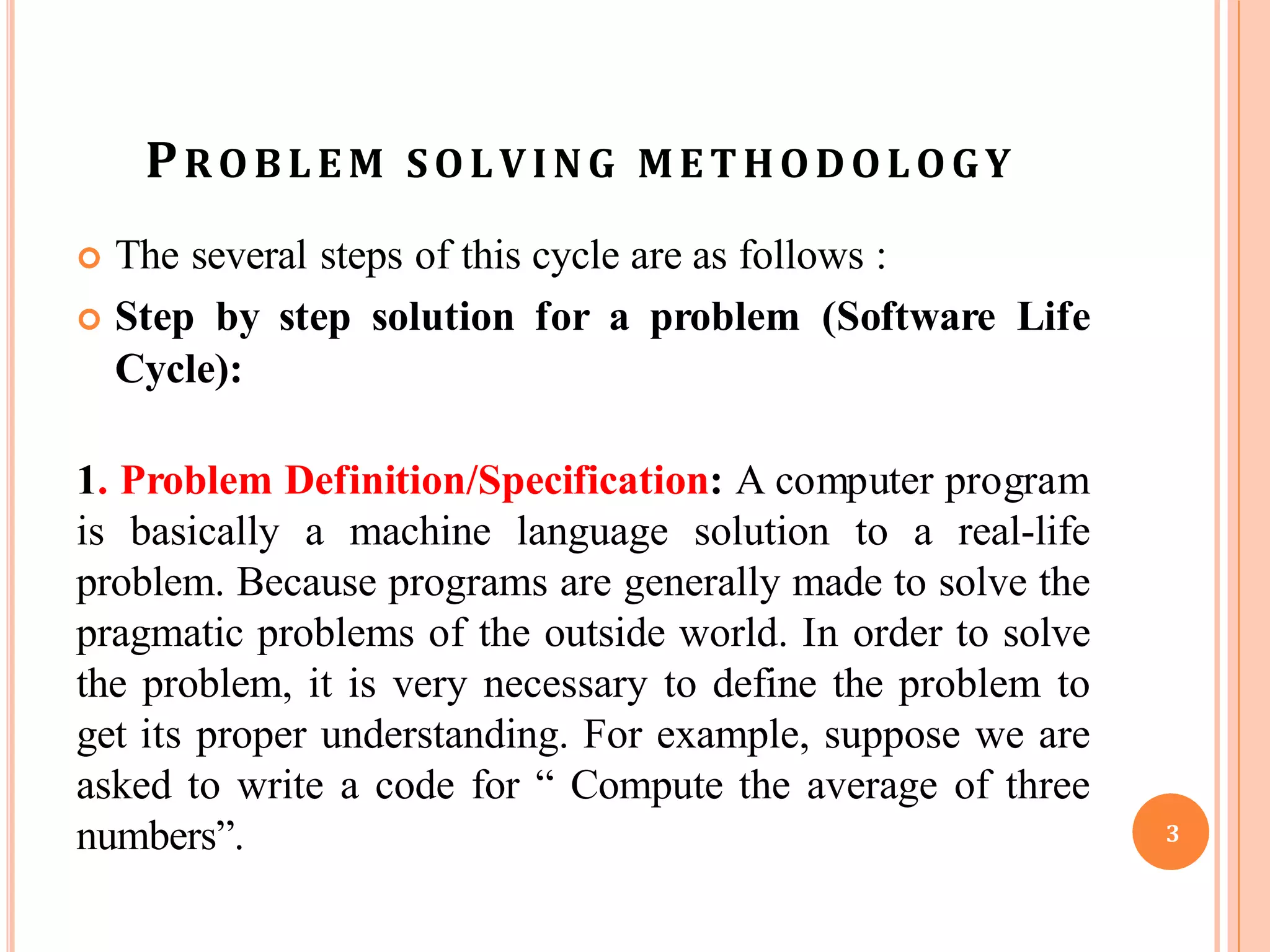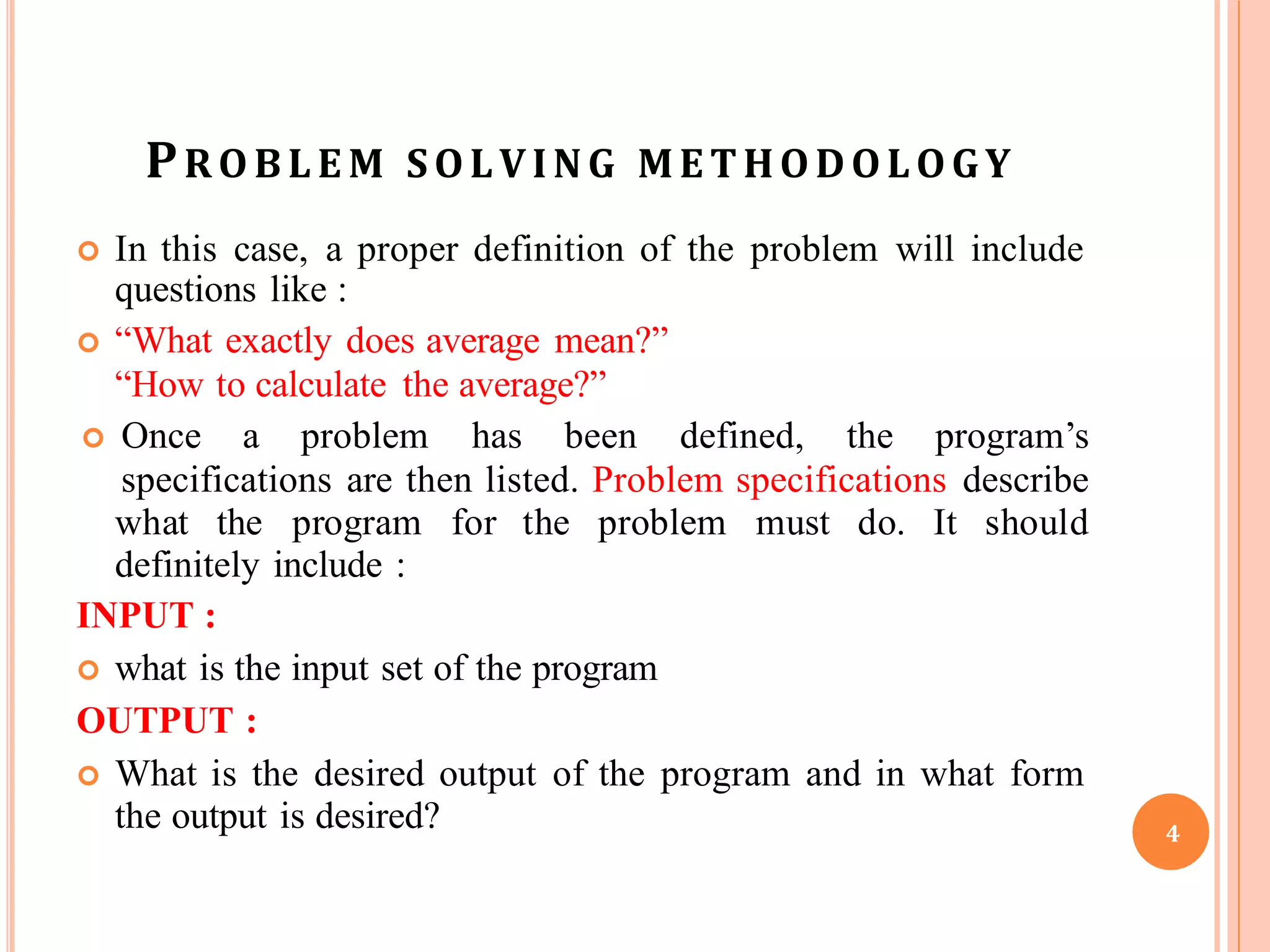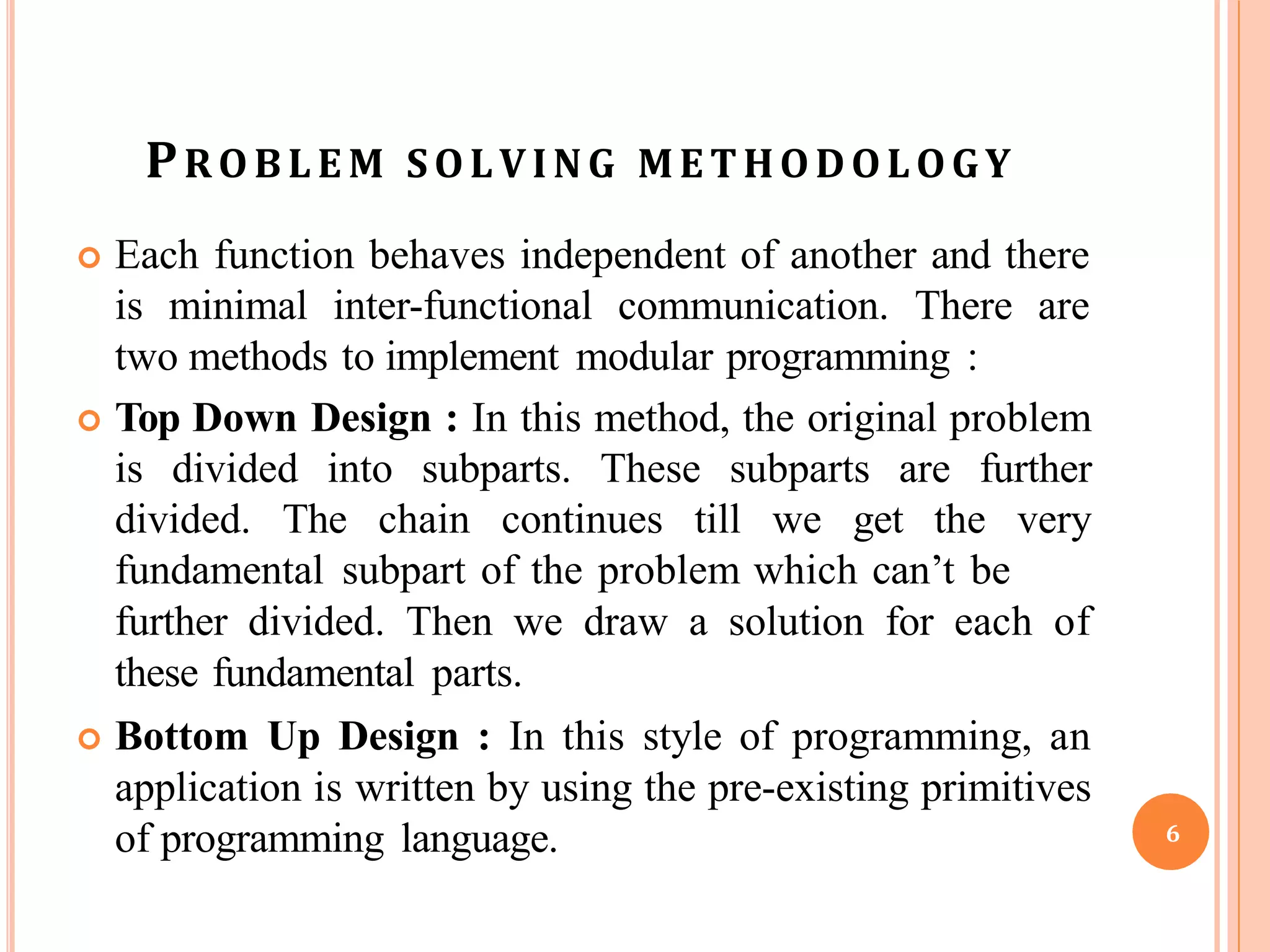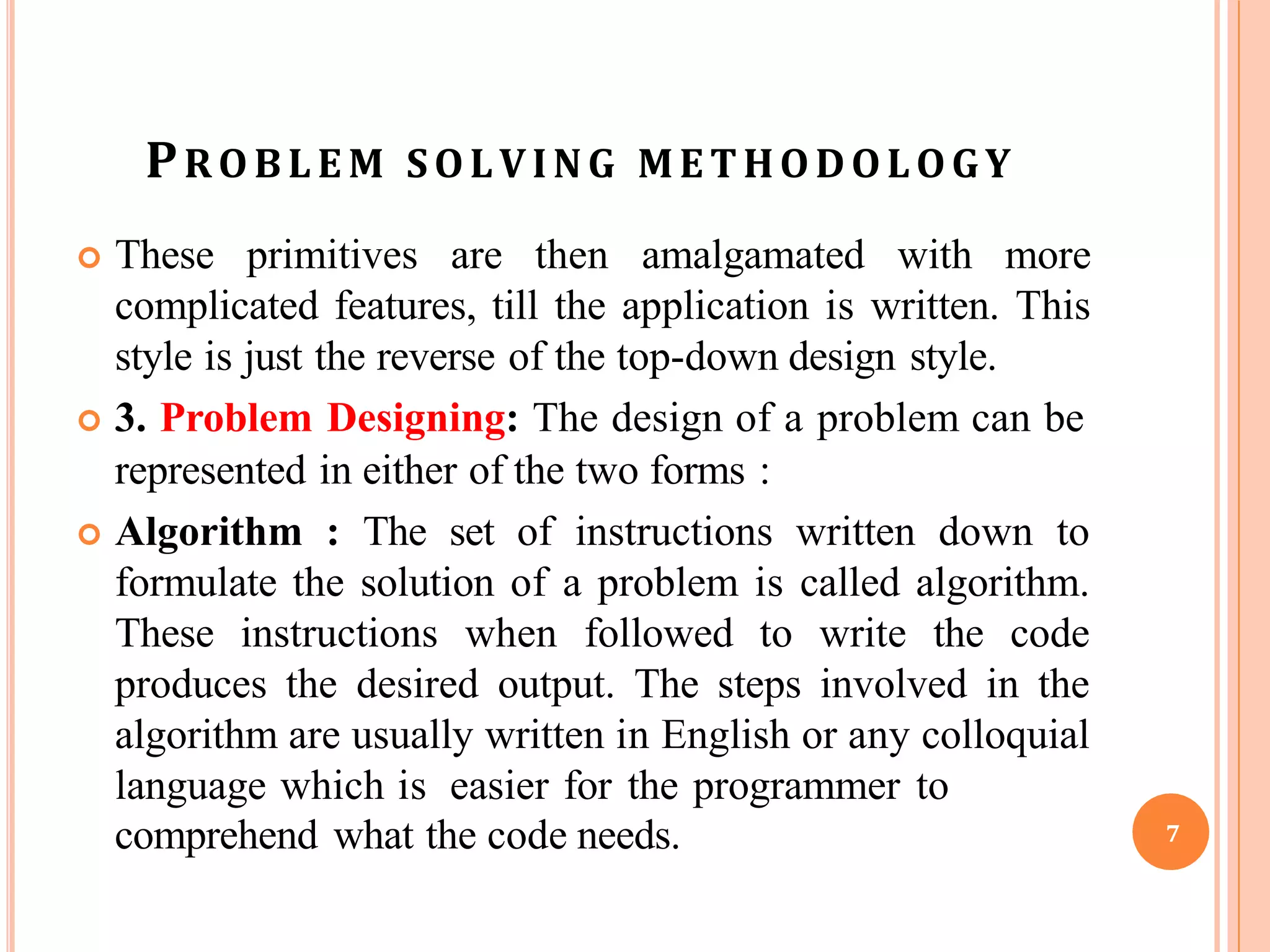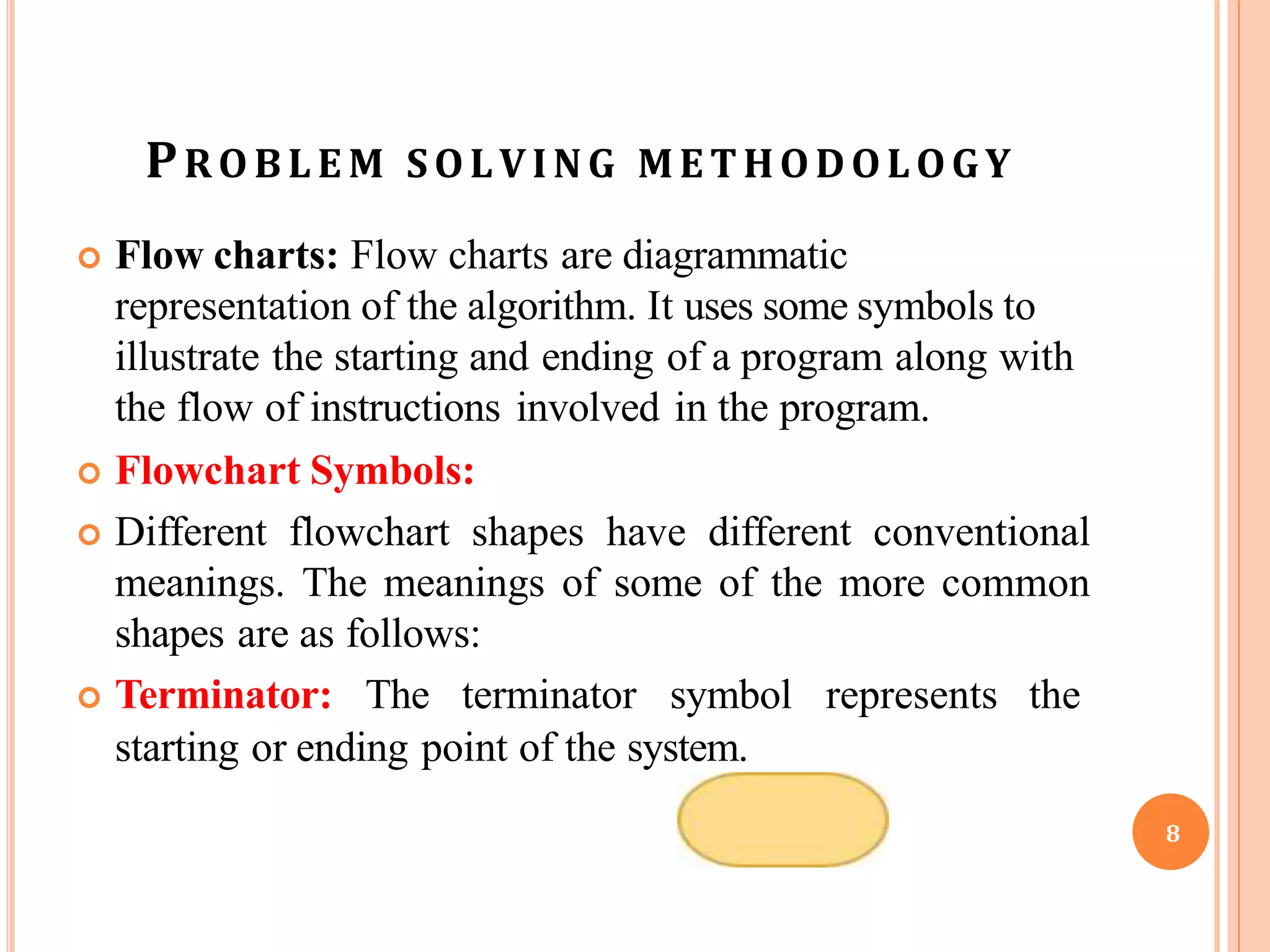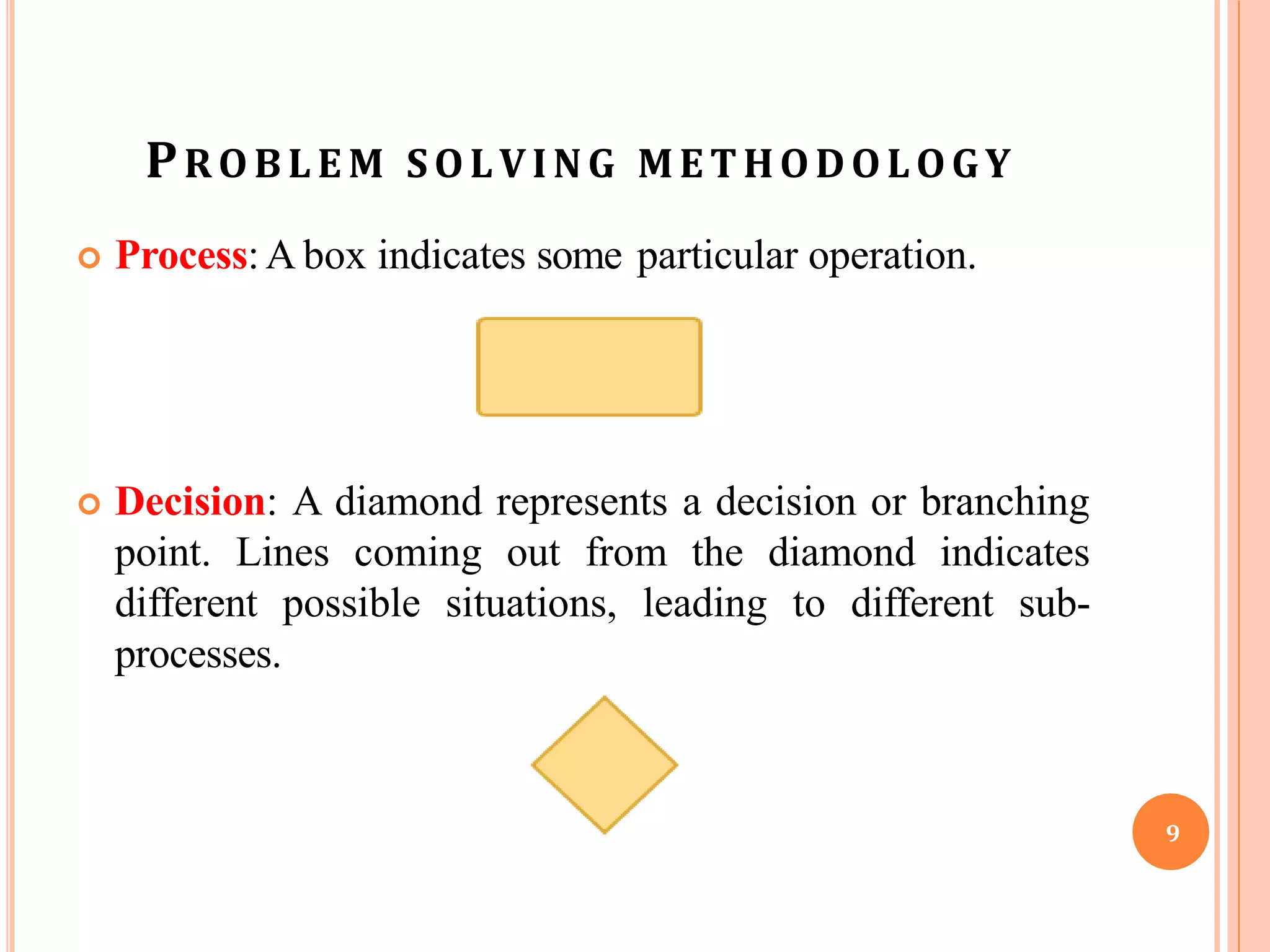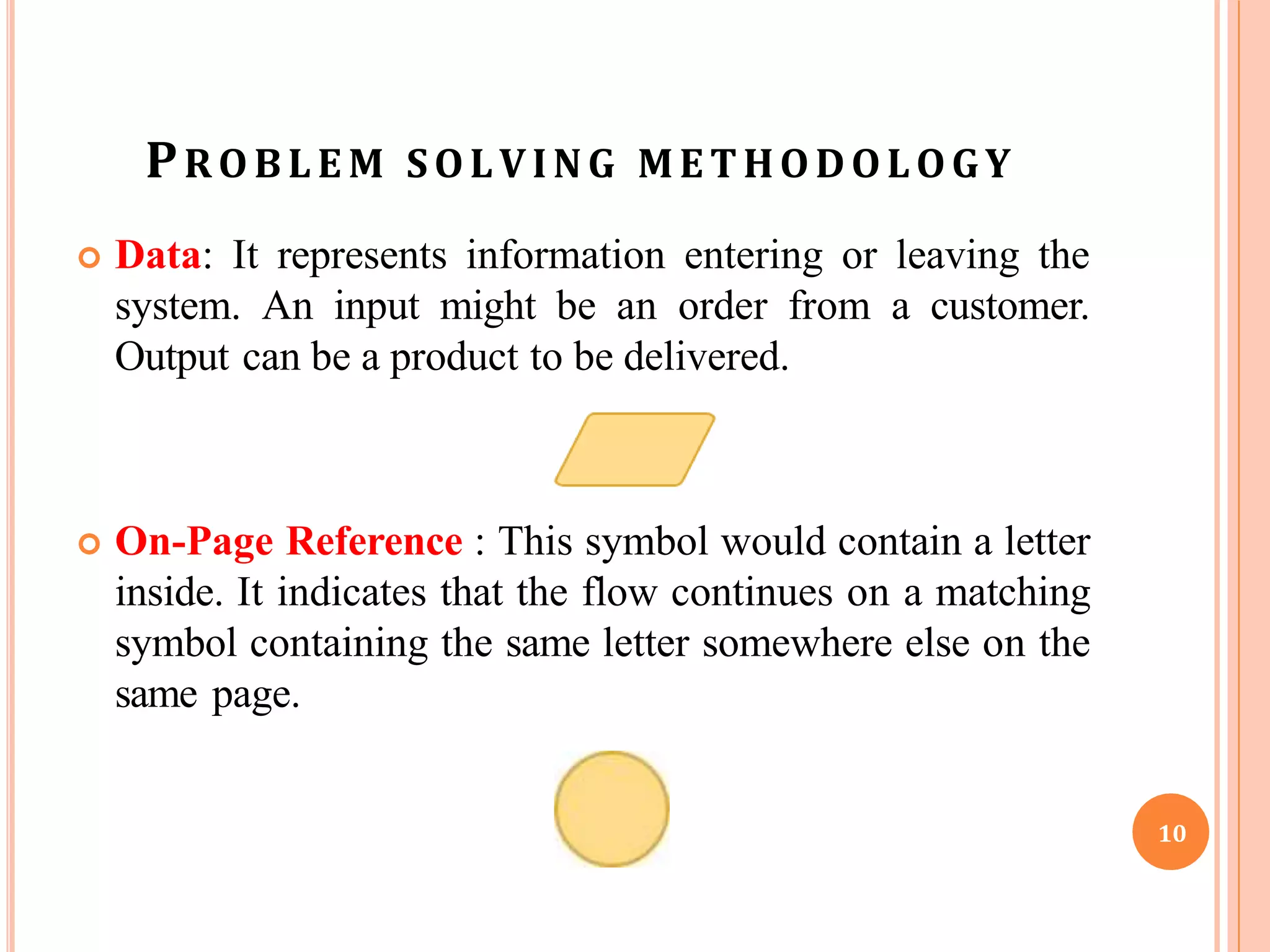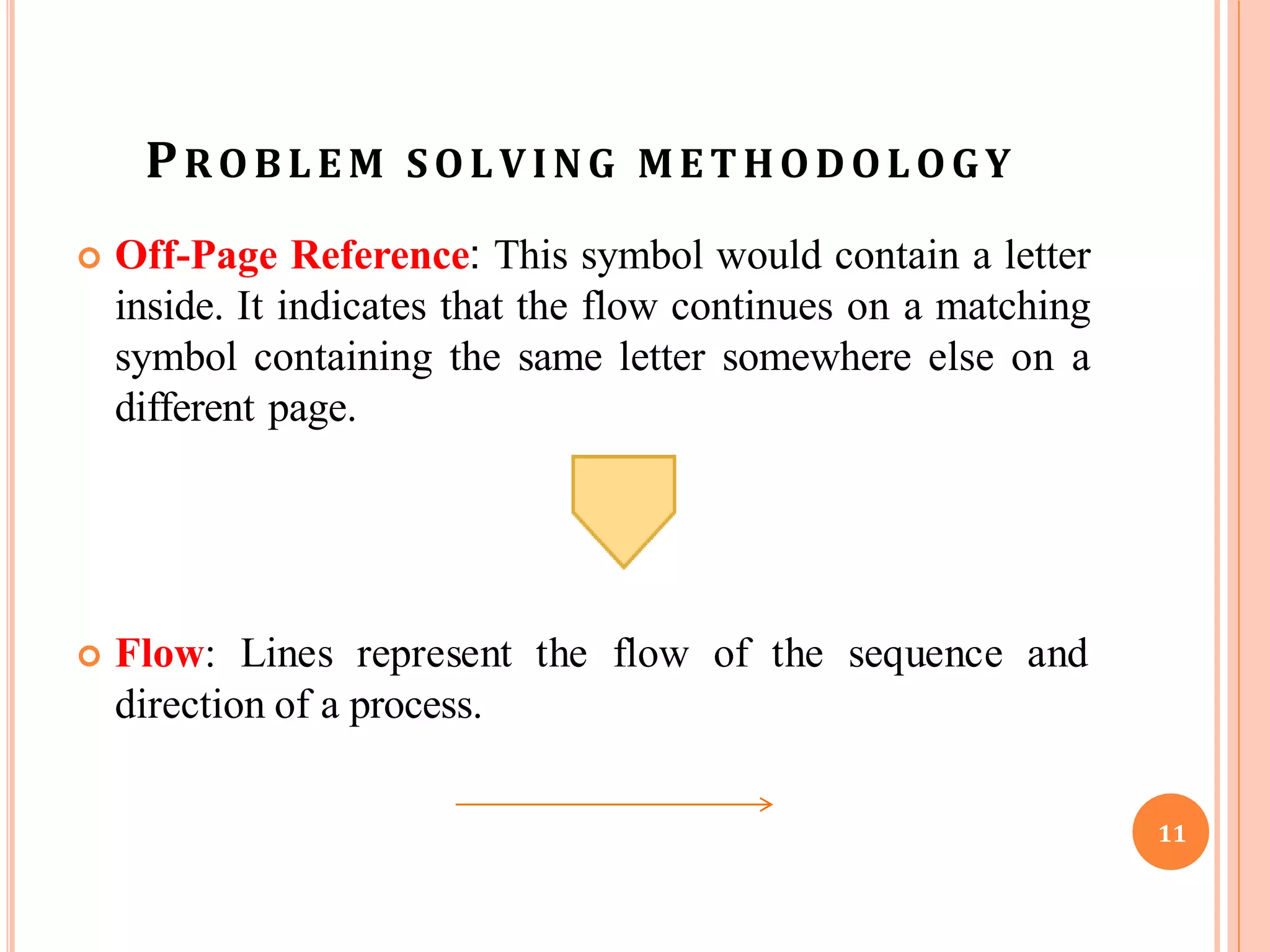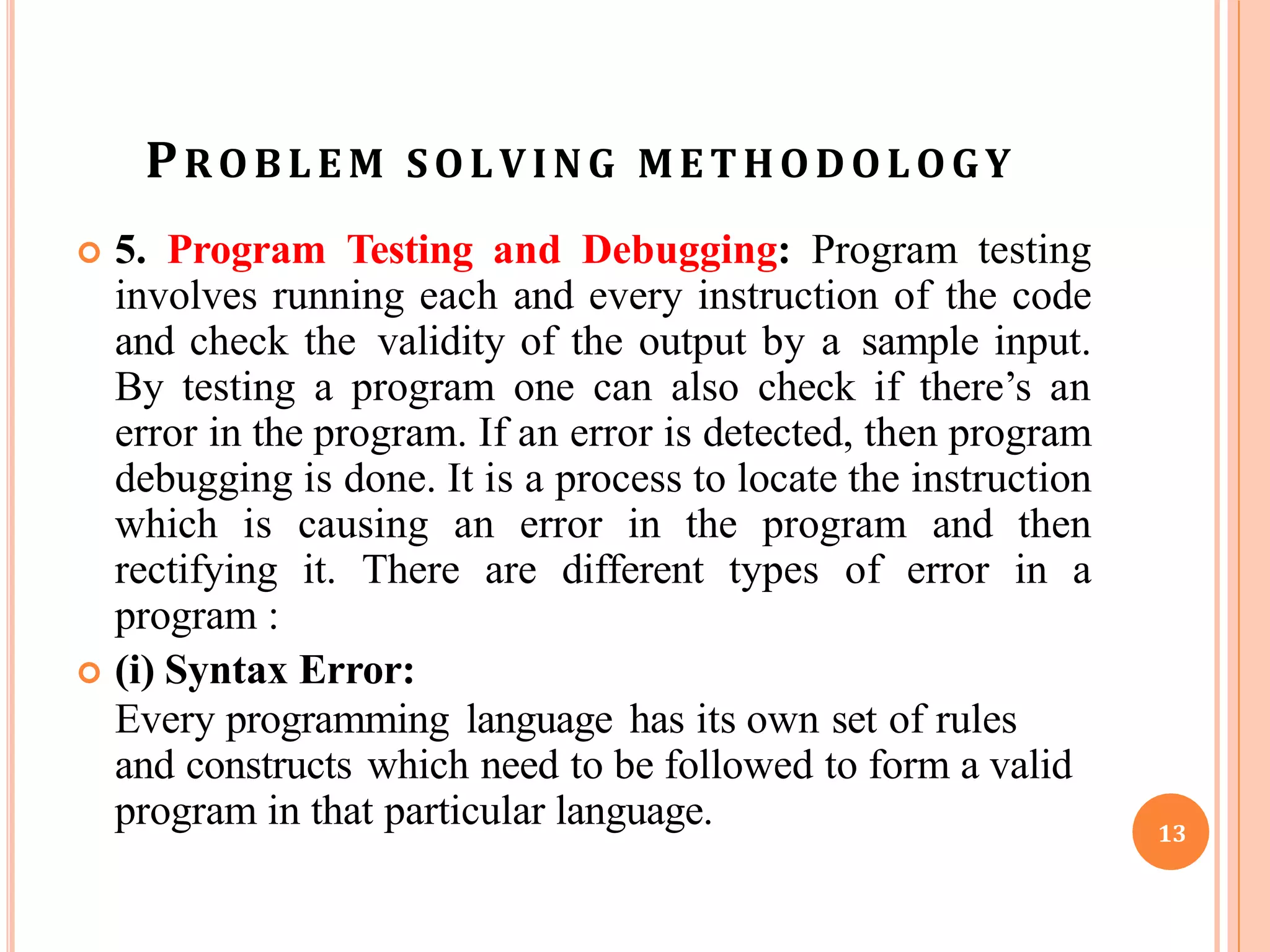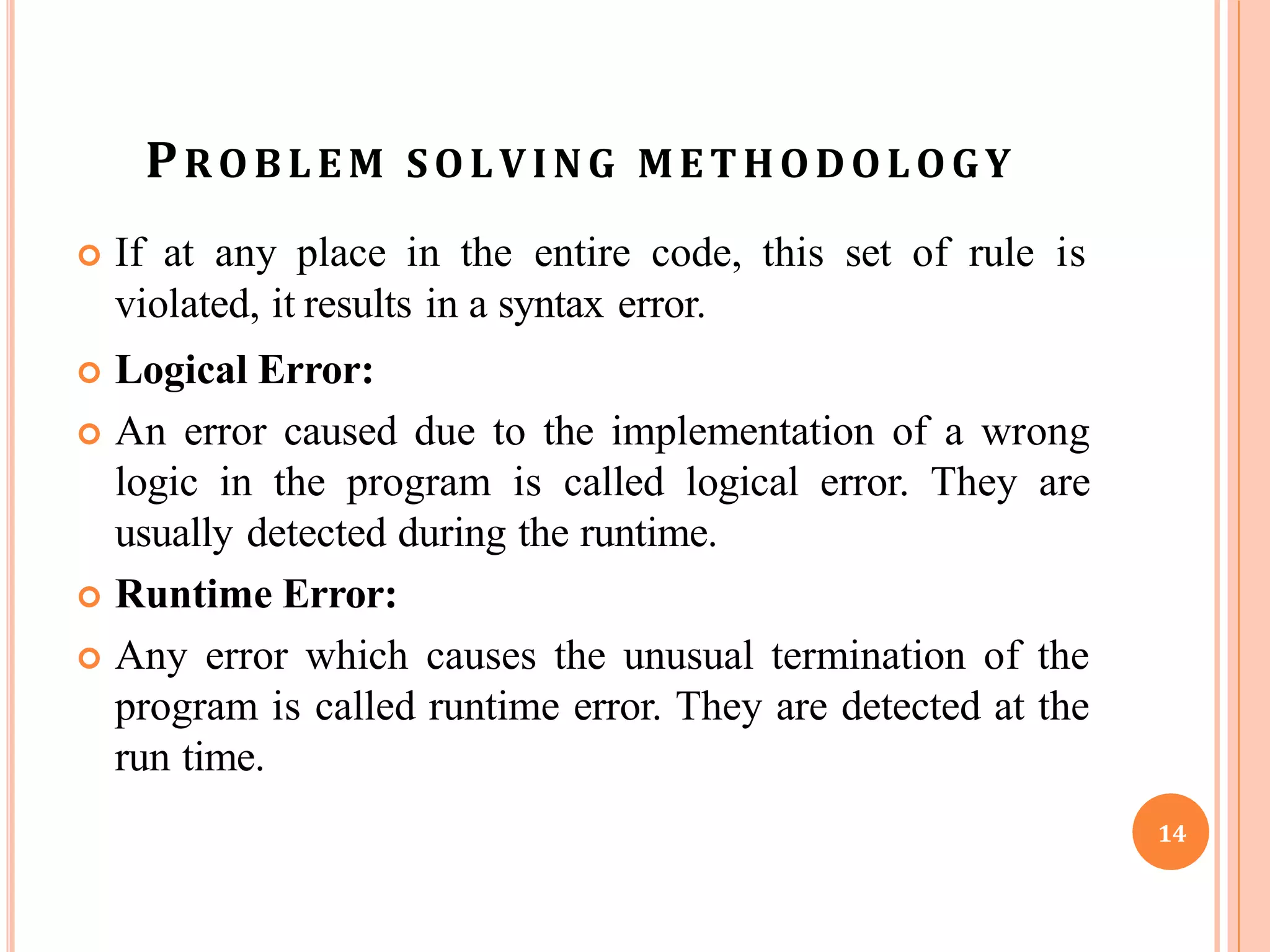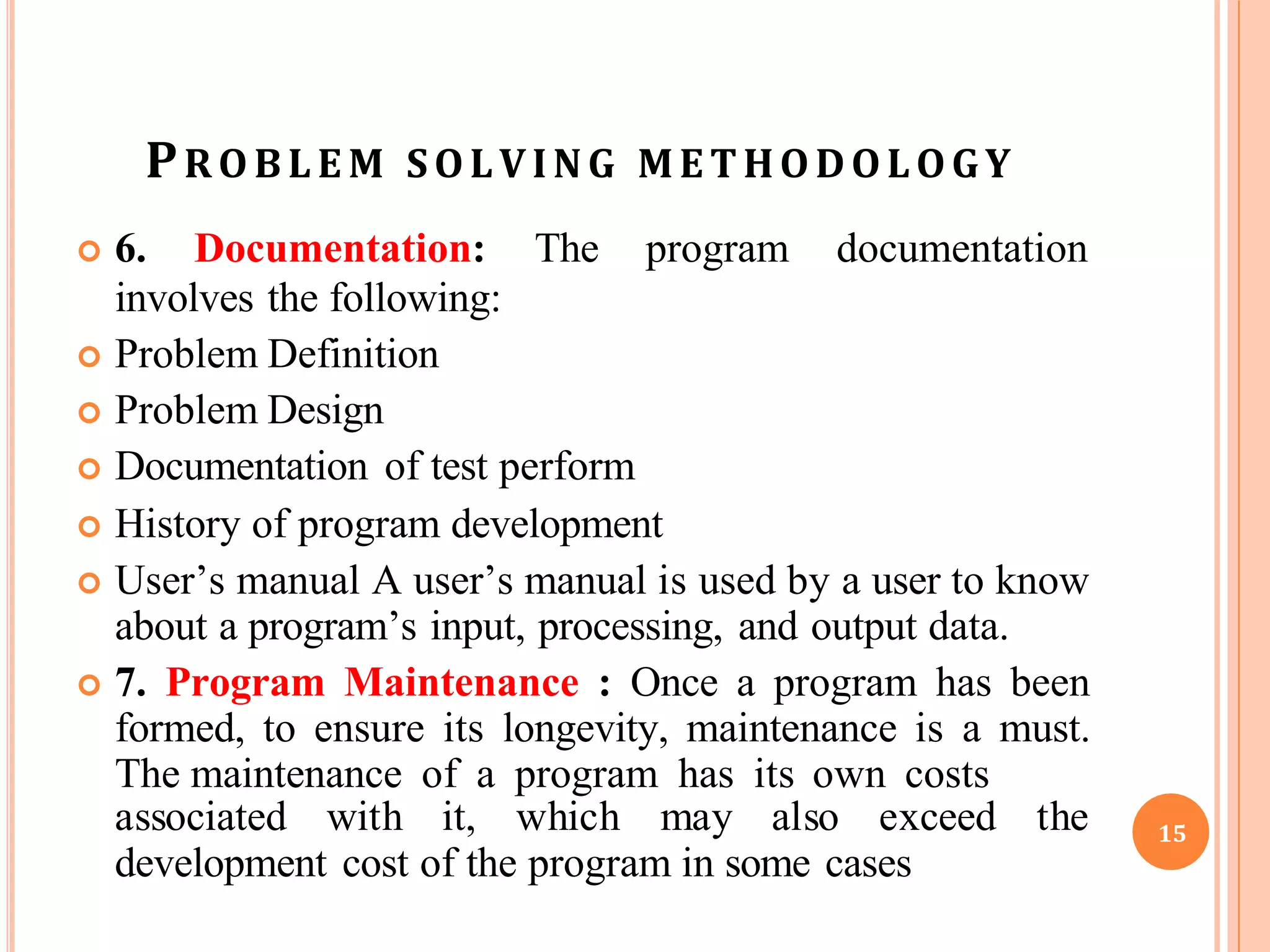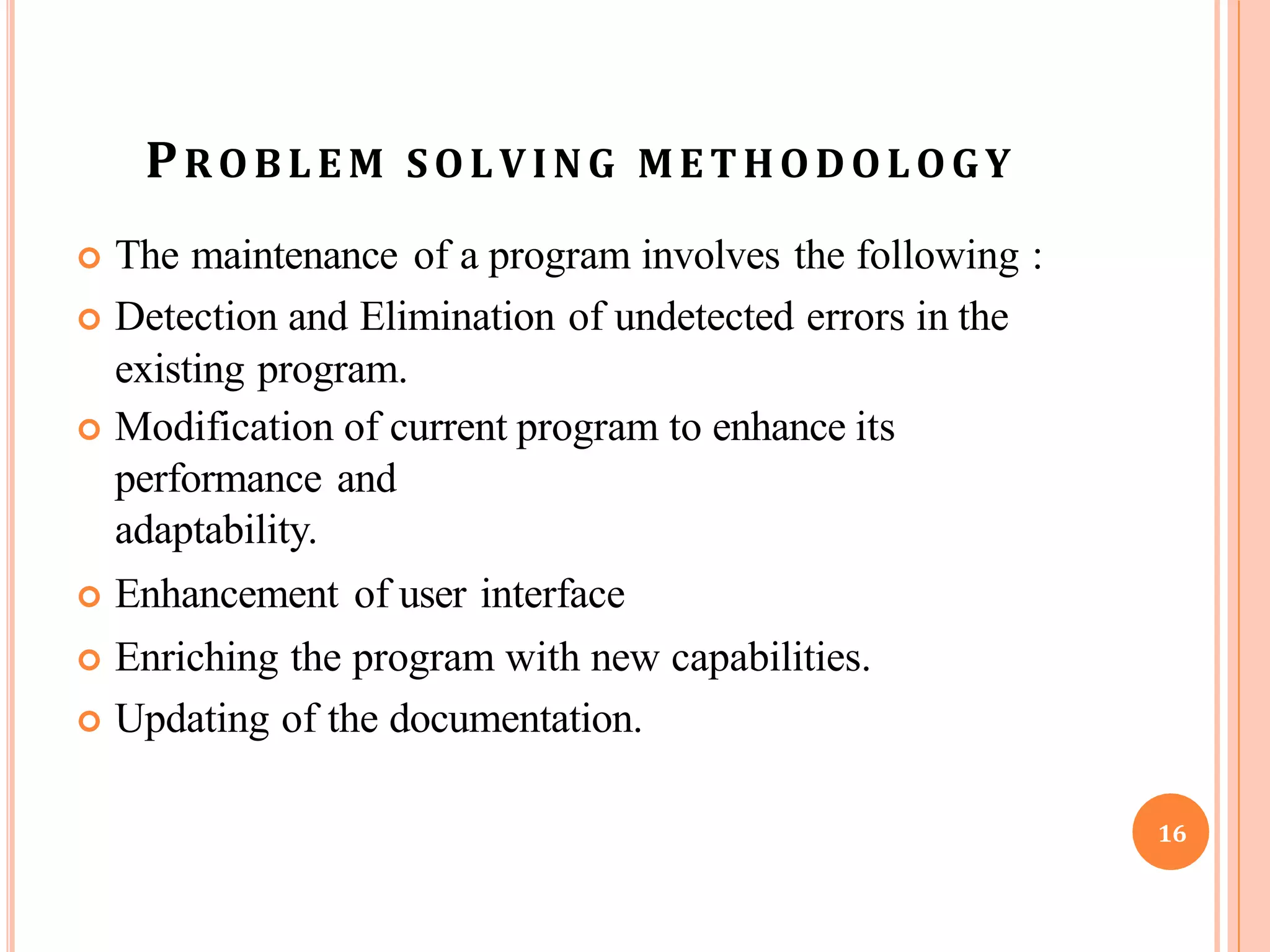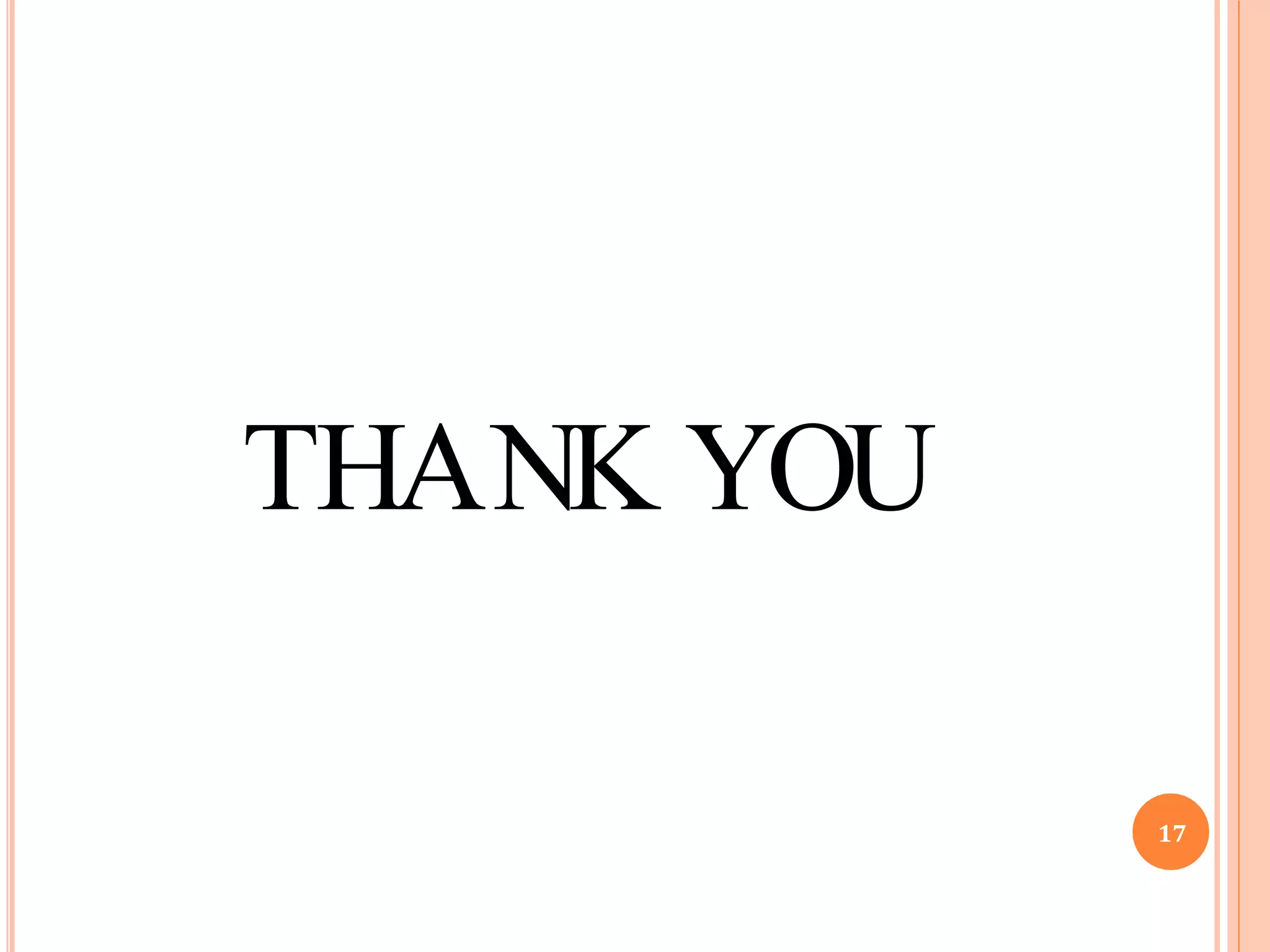This document outlines the problem solving methodology for developing computer programs. It discusses the following key steps:
1. Problem definition and specification to clearly define the problem and desired inputs/outputs.
2. Problem analysis and breaking the problem down into modular subproblems using techniques like top-down or bottom-up design.
3. Problem design by creating algorithms or flowcharts to represent the solution logic.
4. Coding the algorithm into a programming language.
5. Testing and debugging the program to identify and fix any errors.
6. Creating documentation for the problem, design, tests and user manual.
7. Ongoing program maintenance to fix bugs, enhance performance and adapt
![ALGORITHMS TO
PR OG R AMS :S PE C IF IC ATION,
TOP-DOWN DESIGN AND
STEP-WISE REFINEMENT
BY: SHRESHTHA MISRA
[CSE DEPT]
1](https://image.slidesharecdn.com/algorithmtoprograms-230806053656-5f2779e3/75/Algorithm-to-programs-pptx-1-2048.jpg)
